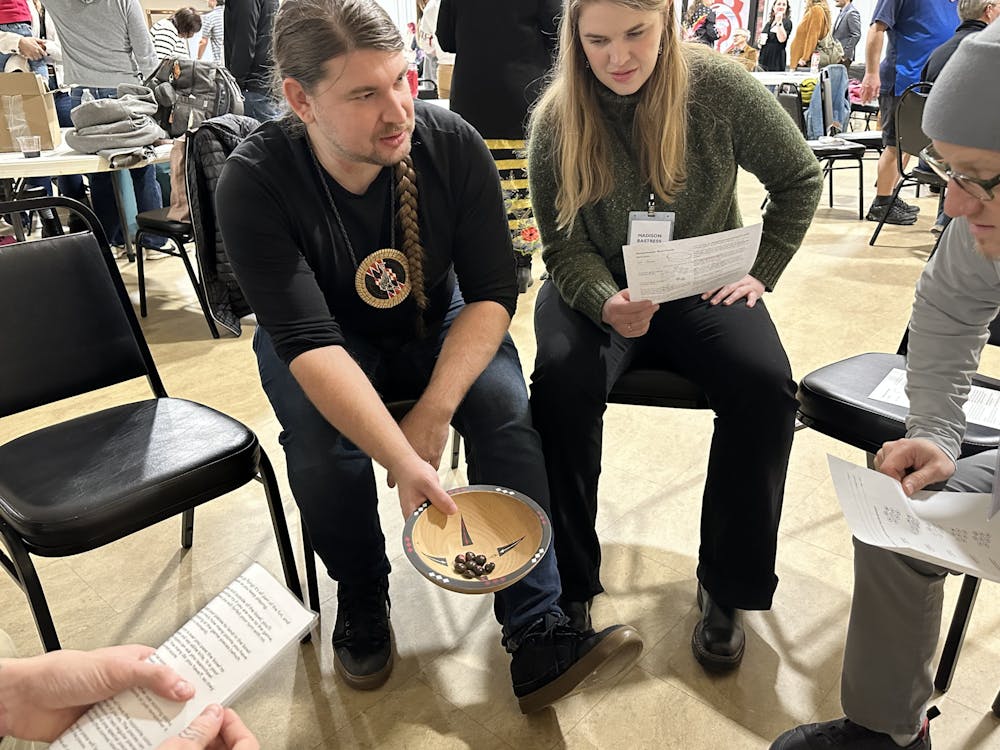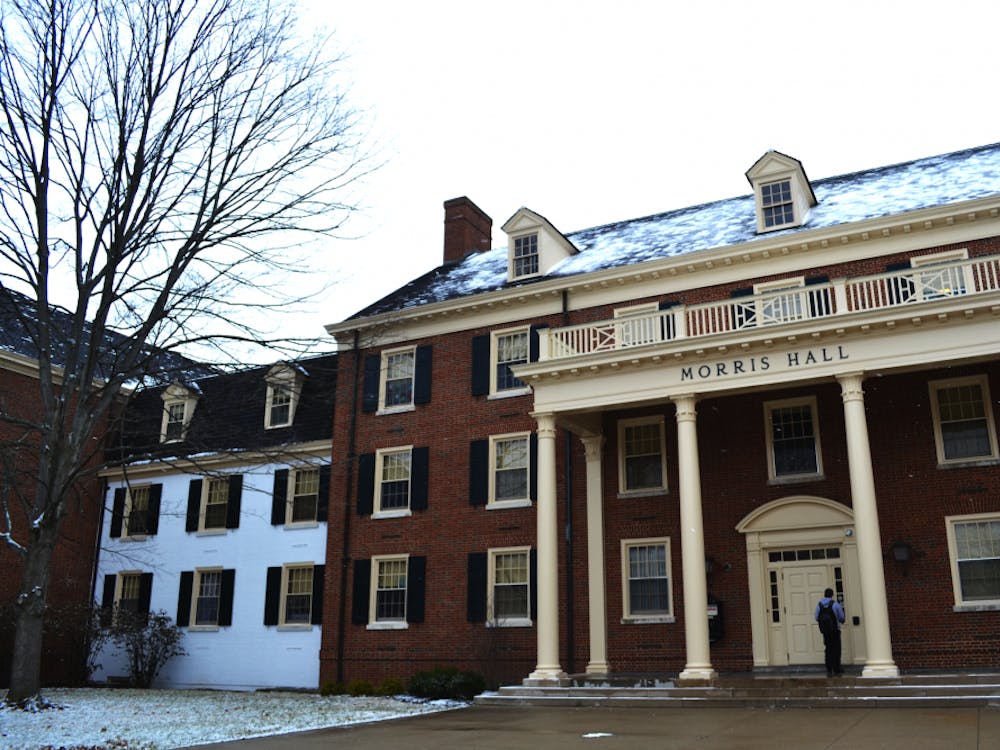To many people, the winter season brings feelings of reunion with family, friends and, most importantly, home. For most of the Miami Tribe of Oklahoma, reunion means trekking to Oklahoma to gather with their people and culture.
More than 400 Miami Tribe members and guests gathered at tribal headquarters in Miami, Oklahoma, on Friday, Jan. 26 to celebrate their 27th annual winter gathering. The two-day event included students and faculty from Miami University and various Native American tribes, including Seneca Cayuga, Creek, Osage, Cherokee, Shawnee, Quapaw and Peoria.
The event started in 1997 as a stomp dance but has grown to include games, crafts, presentations, storytelling and gourd dancing.
“Our winter gatherings are when we have our people come home,” Donya Williams, the elected secretary-treasurer of the tribe, said. “We are always stronger together than we are apart.”
This year, they honored Diane Hunter, the now retired Tribal Historic Preservation Officer (THPO), with the highest accolade for her work in protecting and preserving historic lands and providing education about the Miami Tribe. The THPO position was established in Section 106 of the National Historic Preservation Act, which dictates that federal agencies must consult with the THPO before a project, usually ground service, on historic lands.

Diane Hunter receives award from Cheif Douglas Lankford
Logan York, a Miami University alum, will replace Hunter as the new THPO after her nine years of service to the community.
The federally recognized Miami Tribe used to live in the states of present-day Indiana, Illinois, Ohio, Wisconsin and Michigan until a series of treaties forcefully removed the Myaamia people into Kansas and then Oklahoma, where they currently reside.
The winter gathering serves to reunite the tribe, which has citizens in all 50 states, and promote efforts to revitalize myaamiaataweenki — Miami language — and cultural traditions.
Games and makerspace activities
Among the many festivities and traditions of the Myaamia people include the Moccasin Game, or mahkisina meehkintiinki, in which participants on one side hid four pieces — three white and one black — under four small pads, and the other team had to flip over the pads with a drumstick in attempt to find the black piece on the second or third try. The hiding team got points if found on the first or fourth try.
Seenseewinki, also known as the plum stone game, was another game played at the event in which participants flipped small stones marked with x’s and dots in red and white in an attempt to create a particular formation. Points are awarded based on the rarity of the formation, ranging from two to 10.
Enjoy what you're reading?
Signup for our newsletter
“I think my favorite part so far has been playing the games,” Richard Moore, a botanist and associate professor in the biology department, said. “I really enjoyed the bowl game.”

The event included students and faculty from Miami University and various Native American tribes.
Moore went on the 12-hour journey as a part of a workshop called Indigenizing the Curriculum. The workshop, composed of several university faculty across various departments, has plans to create modules and lessons that connect with the Miami Tribe.
Storytelling
Aalhsoohkaana, the winter stories, feature talking animals and Wiihsakacaakwa — a humorous character with immense power and insights from previous generations. The stories may only be told in the wintertime and are not meant to be video or audio recorded, preserving the richness of the present moment.
“One reason for this [seasonal] restriction is that we demonstrate respect for the animals by telling stories about them only during the winter when they are less active, hibernating or have migrated away,” according to Aacimotaatiiyankwi, a community blog.
The winter stories embody traditional narratives about the Miami Tribe and establish the philosophy for navigating present-day challenges.
Gourd Dancing
The Gourd Dance, revitalized by Kiowa veterans after World War II and the Korean War, is meant to honor tribal veterans. Several drummers sit around the large drum and keep a steady pace, while dancers stand around them in a circle and shake their decorated gourd, or stainless steel salt shaker, to the rhythm of the drum.
During the song, the dancers move around and shake to the drum, but as the song changes to a stronger beat, the dancers stop in place and shake their gourds harder, singing songs passed down by their ancestors.

The Gourd Dance honors tribal veterans in the community.
Stomp Dance
For Myaamia people, the Stomp Dance is a social dance characterized by celebrating fire and togetherness. The Shawnee Tribe taught Myaamiaki (the Miami people) the traditional stomp dance in the mid-1990s, revitalizing the dance that was lost after forceful removal from their homelands.
The Stomp Dance consists of a flame with participants spiraling around it, alternating between man and woman. The women wear shell shakers around their ankles while the man in the front leads the call. The participants begin to stomp their feet, moving around the flame while the men call. Anyone can participate in the dances, tribal member or not.

For Myaamia people, the Stomp Dance is a social dance characterized by celebrating fire and togetherness.
“We get together and dance together, and make everything feel okay,” Williams said. “I hope dancing together and being with us and feeling like family here is what we all try to portray.”
Many people participated in the Stomp Dance, ranging from tribe members to Miami University faculty — for many, it was their first time.
Madalyn Warnimont, a Miami University alum, participated in the dance and liked the social element of the event.
“I feel like there’s a really close connection with everyone, even if you’re not part of the culture,” Warnimont said.
The Stomp Dance wrapped up the event, leaving the Miami Tribe and its guests forever connected as they departed.
Indigenous communities have historically been misrepresented and inaccurately reported on by the press, including The Miami Student. To address this history, we work with Stella Beerman, Myaamia Adviser to The Miami Student, to ensure that each story including the Myaamia Center and the Miami Tribe of Oklahoma is accurate.




